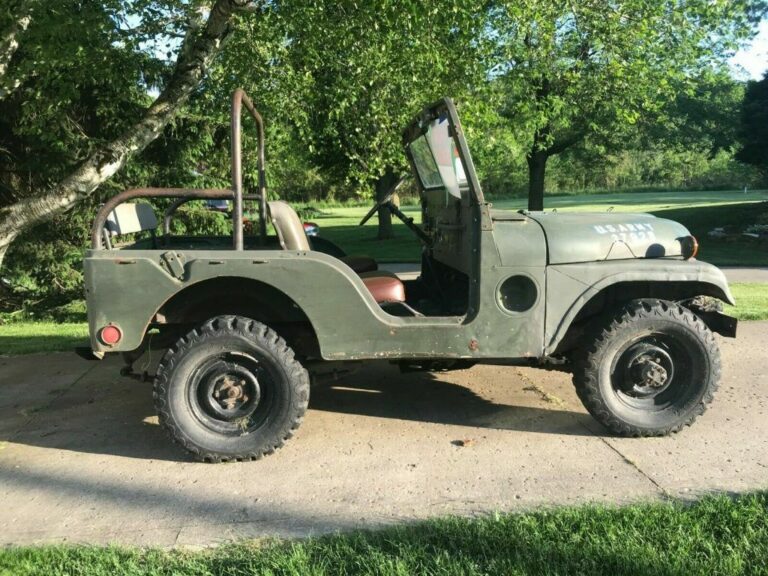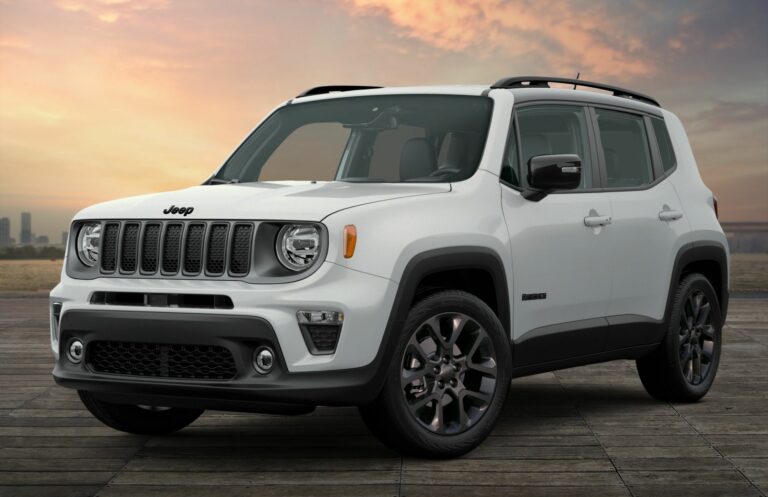Jeep Rubicon Axles For Sale: The Ultimate Guide to Upgrading Your Off-Road Capability
Jeep Rubicon Axles For Sale: The Ultimate Guide to Upgrading Your Off-Road Capability jeeps.truckstrend.com
For any serious off-road enthusiast, the name "Rubicon" evokes images of rugged capability, unwavering performance, and the ability to conquer the toughest trails. While the Jeep Rubicon trim level comes with a host of factory upgrades, one of its most coveted features lies beneath its chassis: the robust Dana 44 axles, equipped with electronic locking differentials and lower gearing. These axles are the backbone of the Rubicon’s legendary prowess, making them a highly sought-after commodity in the aftermarket for Jeep owners looking to significantly enhance their vehicle’s off-road capabilities.
This comprehensive guide delves into everything you need to know about "Jeep Rubicon Axles For Sale," from understanding their unique benefits and various types to navigating the purchasing process, considering crucial factors, and addressing common questions. Whether you’re upgrading a Sport, Sahara, or even a different generation of Jeep, acquiring Rubicon axles can be a game-changer for your adventures.
Jeep Rubicon Axles For Sale: The Ultimate Guide to Upgrading Your Off-Road Capability
Why Choose Rubicon Axles? The Core Benefits
The allure of Rubicon axles isn’t just about branding; it’s about a tangible leap in off-road performance and durability. Here’s why they are so highly desired:
-
Enhanced Strength and Durability:
- Dana 44 Front and Rear: Unlike the standard Dana 30 front and Dana 35/44 rear axles found in many non-Rubicon models, Rubicon Jeeps come equipped with Dana 44 axles at both ends (though specifications vary by generation). The Dana 44 is a significantly stronger axle, featuring larger ring and pinion gears, thicker axle tubes, and more robust internal components, reducing the risk of breakage under stress, especially with larger tires and aggressive off-roading.
- Larger U-Joints/CV Joints: Depending on the generation, Rubicon axles often feature larger, stronger U-joints or CV joints in the front axle shafts, further enhancing their resilience.

-
Factory Electronic Locking Differentials (Tru-Lok/eLocker):
- This is arguably the most significant advantage. Rubicon axles come standard with selectable electronic lockers in both the front and rear. When engaged, these lockers mechanically connect both wheels on an axle, forcing them to spin at the same speed. This provides maximum traction in low-speed, high-traction demand situations, such as climbing rocky obstacles or navigating deep mud, where open differentials would allow wheels to spin freely, causing loss of momentum.
-
Optimal Gearing for Off-Roading:
- Most Rubicon axles come factory-equipped with lower gear ratios, typically 4.10:1 (or even 3.73:1 in some early models, and 4.10/4.56/4.88 in JL/JT). These lower gears provide increased torque to the wheels, which is crucial for crawling over obstacles, tackling steep ascents, and maintaining control in challenging terrain, especially when running larger tires. This often eliminates the need for an expensive re-gearing project if you’re already planning to run 35-inch or larger tires.
-
Direct Bolt-On Compatibility (for same-generation swaps):
- For owners of non-Rubicon JK/JKU or JL/JLU models, swapping in a set of Rubicon axles from the same generation is often a relatively straightforward "bolt-on" process. This means the suspension mounts, track bar mounts, and control arm mounts are in the correct locations, minimizing fabrication work and reducing overall conversion costs.
-
Value Proposition:
- Purchasing used Rubicon axles can be a cost-effective way to gain Dana 44 strength, lockers, and optimal gearing compared to buying a non-Rubicon axle and then individually upgrading it with aftermarket lockers, gears, and stronger shafts. The factory integration and proven reliability add to their appeal.
Understanding Rubicon Axle Types and Generations
Jeep Rubicon axles have evolved with each new generation of the Wrangler and Gladiator. Knowing these differences is crucial for compatibility and performance expectations:
-
TJ/LJ Rubicon Axles (1997-2006 Wrangler/Unlimited):
- Front: Dana 44 (low pinion, 30-spline inner/outer shafts).
- Rear: Dana 44 (low pinion, 30-spline shafts).
- Features: Air lockers (early models), later electric lockers. 5×4.5" bolt pattern.
- Note: While strong for their time, these are less common for modern swaps due to the older design and smaller bolt pattern compared to JK/JL.
-
JK/JKU Rubicon Axles (2007-2018 Wrangler/Unlimited):
- Front: Dana 44 (high pinion, 30-spline inner/outer shafts).
- Rear: Dana 44 (low pinion, 30-spline shafts).
- Features: Electronic Tru-Lok lockers, 4.10 gearing. 5×5" bolt pattern. Thicker axle tubes than non-Rubicon D44s. These are perhaps the most popular for aftermarket upgrades due to their availability and robust design.
-
JL/JLU Rubicon & Gladiator JT Rubicon Axles (2018-Present Wrangler/Gladiator):
- Front: Dana M210 (AdvanTEK/Next-Gen Dana 44, high pinion). Wider than JK front axles.
- Rear: Dana M220 (AdvanTEK/Next-Gen Dana 44, low pinion).
- Features: Electronic lockers, typically 4.10, 4.56, or 4.88 gearing options depending on specific trim/packages. 5×5" bolt pattern. These are even stronger than JK axles, with larger ring gears and updated designs. Gladiator axles are often wider than Wrangler axles.
Where to Find Jeep Rubicon Axles For Sale
Locating Rubicon axles requires a bit of searching, but several avenues can yield results:
-
Online Marketplaces:
- eBay: A wide selection, but inspect photos carefully and verify seller reputation. Shipping can be expensive.
- Facebook Marketplace/Groups: Excellent for local finds, allowing in-person inspection. Look for dedicated Jeep parts groups.
- Craigslist: Similar to Facebook Marketplace for local listings.
- Dedicated Jeep Forums/Classifieds: Sites like JK-Forum, JL-Forum, or Expedition Portal often have classified sections where members sell parts.
-
Salvage Yards/Wreckers:
- Jeeps involved in accidents often have salvageable axles. Call local auto recyclers, especially those specializing in 4x4s.
-
Specialized Jeep Parts Dealers/Retailers:
- Some aftermarket companies or off-road shops specialize in selling used, rebuilt, or upgraded OEM axles. These often come with a higher price tag but may offer warranties or a more thorough inspection.
-
Private Sellers:
- Individuals upgrading their own Rubicons to even stronger aftermarket axles (e.g., Dana 60s) frequently sell their OEM Rubicon axles.
Key Considerations Before Buying
A significant investment like a set of axles requires careful consideration and inspection:
-
Condition is Paramount:
- Visual Inspection: Look for bent axle tubes, severe rust, impact damage to the differential housing, or cracks in welds.
- Leaks: Check around the differential cover, pinion seal, and axle seals for fluid leaks.
- Play: Check for excessive play in the pinion flange or axle shafts, which could indicate worn bearings.
- Completeness: Do they come with brake calipers, rotors, steering knuckles, unit bearings, and the locker wiring harness? Missing components add to your cost.
-
Gearing Confirmation:
- Always verify the gear ratio. Look for tags on the differential cover bolts or axle tubes. If no tag, you might need to open the differential or count gear teeth.
-
Locker Functionality:
- Ideally, test the lockers. If buying from a vehicle, engage them. If standalone, you might need to apply power to the locker actuator to confirm it engages. Assume that seals and potentially the locker mechanism might need service on used units.
-
Compatibility with Your Jeep:
- Generation Match: JK axles for JK Jeeps, JL axles for JL Jeeps. Mixing generations requires significant fabrication (new control arm mounts, track bar mounts, shock mounts, etc.).
- Width: Ensure the axle width is appropriate for your application. JL/Gladiator axles are often wider than JK axles.
- Bolt Pattern: JK/JL/JT are 5×5", while TJ/YJ/XJ are 5×4.5".
- Driveshafts: You will likely need new driveshafts to accommodate the new pinion angles or U-joint sizes.
- Brakes: Ensure your brake system is compatible. You might need to adapt brake lines or sensors.
- ABS/Speed Sensors: Ensure these are intact and compatible with your vehicle’s system.
- Locker Wiring: Rubicon lockers require a wiring harness and a switch to operate. If your non-Rubicon Jeep doesn’t have this, you’ll need to source and install it, which can involve some electrical work.
-
Shipping and Logistics:
- Axles are heavy and bulky. Factor in freight shipping costs if buying from a distance. Local pickup is always preferred.
-
New vs. Used vs. Rebuilt:
- Used: Most common, best value, but highest risk.
- Rebuilt: Often sold by specialized shops, come with new seals, bearings, and possibly a warranty. Higher cost but lower risk.
- New (OEM Crate Axles): Available from Jeep dealerships or Mopar performance, but extremely expensive.
Practical Advice and Actionable Insights
- Set a Realistic Budget: Beyond the purchase price, factor in shipping, potential rebuild costs (seals, bearings, ball joints), new driveshafts, brake lines, locker wiring, and professional installation if you’re not doing it yourself.
- Ask for Detailed Photos/Videos: Don’t rely on one blurry picture. Request specific angles, close-ups of potential damage, and the gear tag.
- Get the VIN (if possible): If the axles are from a donor vehicle, the VIN can help verify the year and original specs.
- Inspect in Person: If at all possible, physically inspect the axles. This is the best way to assess their condition.
- Factor in Rebuild Costs: Even if they look good, plan to replace seals, bearings, and potentially ball joints (for the front axle) as preventative maintenance.
- Professional Help: If you’re not comfortable with heavy-duty mechanical work and electrical wiring, budget for professional installation at a reputable off-road shop. They can ensure proper alignment, gearing, and locker functionality.
Jeep Rubicon Axles For Sale: Estimated Price Guide
Please note that prices for used axles vary wildly based on condition, mileage, completeness, location, and market demand. These are general estimates for a pair of axles (front and rear) unless specified, assuming good, used condition. Rebuilt or new axles will be significantly more expensive.
| Axle Type (Pair) | Condition | Key Features | Estimated Price Range (USD) | Notes |
|---|---|---|---|---|
| JK/JKU Dana 44 | Used | Front HP D44, Rear LP D44, Tru-Lok, 4.10 gears | $3,000 – $6,000 | Most common, often complete with knuckles/brakes. |
| Rebuilt | New seals, bearings, inspected lockers, 4.10 | $6,000 – $9,000+ | From specialized shops, may include warranty. | |
| JL/JLU Dana 44 (M210/M220) | Used | Front M210, Rear M220, eLockers, 4.10+ gears | $4,500 – $8,000 | Newer, stronger. Wider than JK. May require more complex wiring. |
| Rebuilt | New seals, bearings, inspected lockers, 4.10+ | $8,000 – $12,000+ | Premium option, for the latest generation. | |
| Gladiator JT Dana 44 (M210/M220) | Used | Front M210 (wider), Rear M220, eLockers, 4.10+ | $5,000 – $9,000 | Often wider than JL Rubicon axles, consider for full-width builds. |
| TJ/LJ Dana 44 | Used | Front LP D44, Rear LP D44, Lockers (air/elec) | $1,500 – $3,500 | Older, less common, often need more refurbishment. 5×4.5" bolt. |
| Individual JK Front D44 | Used | HP D44, Tru-Lok, 4.10 | $1,500 – $3,000 | Good for those only needing a front upgrade. |
| Individual JK Rear D44 | Used | LP D44, Tru-Lok, 4.10 | $1,000 – $2,500 | Often sold separately if front was damaged. |
Disclaimer: These prices are estimates and can fluctuate significantly based on market conditions, the specific condition of the axles, included components (brakes, steering), and seller’s location.
Frequently Asked Questions (FAQ)
Q1: Are Rubicon axles stronger than regular non-Rubicon axles?
A1: Yes, significantly. Rubicon axles (Dana 44 front and rear in JK/JL) are inherently stronger than the standard Dana 30 front and Dana 35/44 rear axles found in Sport or Sahara models. They feature thicker axle tubes, larger internal components, and come with factory lockers, which are not present in non-Rubicon models.
Q2: Can I put JK Rubicon axles on a TJ Wrangler?
A2: It’s possible, but not a direct bolt-on. JK axles are wider, have a different bolt pattern (5×5" vs. TJ’s 5×4.5"), and require custom fabrication for suspension mounts, shock mounts, and control arm brackets. You’ll also need new driveshafts and possibly adapt brake lines and locker wiring. It’s a significant undertaking.
Q3: Do all Rubicon axles come with lockers?
A3: Yes, all factory Rubicon axles come equipped with electronic locking differentials (Tru-Lok for JK, eLocker for JL/JT) in both the front and rear.
Q4: What gear ratio do Rubicon axles usually have?
A4: Most JK Rubicon axles come with 4.10:1 gearing. JL and Gladiator Rubicon axles offer 4.10:1, 4.56:1, or even 4.88:1 depending on the trim and options (e.g., manual transmission, Xtreme Recon package). Always verify the ratio before purchasing.
Q5: How much does it cost to install Rubicon axles?
A5: Installation costs vary widely. If you’re doing a direct swap (e.g., JK Rubicon axles into a JK Sport) and have mechanical skills, it can be a weekend project with minimal labor cost. If you’re paying a shop, expect several hours of labor, potentially 8-16 hours or more, plus any parts needed (driveshafts, wiring, fluids). Complex swaps (e.g., JK axles into a TJ) can involve extensive fabrication and significantly higher labor costs.
Q6: Should I buy new or used Rubicon axles?
A6: For most enthusiasts, used Rubicon axles offer the best value. New OEM crate axles are extremely expensive. Used axles allow you to get the desired strength and features at a fraction of the cost, leaving budget for any necessary rebuild components (seals, bearings) or professional installation.
Q7: What’s the difference between JK and JL Rubicon axles?
A7: JL Rubicon axles (M210 front, M220 rear) are generally stronger and have updated designs compared to JK Dana 44s. They are also typically wider, and their electronic lockers have different wiring requirements.
Conclusion
Acquiring "Jeep Rubicon Axles For Sale" represents a significant upgrade for any Jeep owner seeking to push the boundaries of their vehicle’s off-road performance. With their robust Dana 44 design, factory electronic lockers, and optimized gearing, these axles provide a substantial leap in durability and traction. While the search, inspection, and installation process requires careful planning and execution, the enhanced capability and confidence they bring to your off-road adventures are undoubtedly worth the effort. By understanding the different types, knowing where to look, and performing thorough due diligence, you can successfully integrate Rubicon axles into your build and unlock your Jeep’s true potential on the trail.



